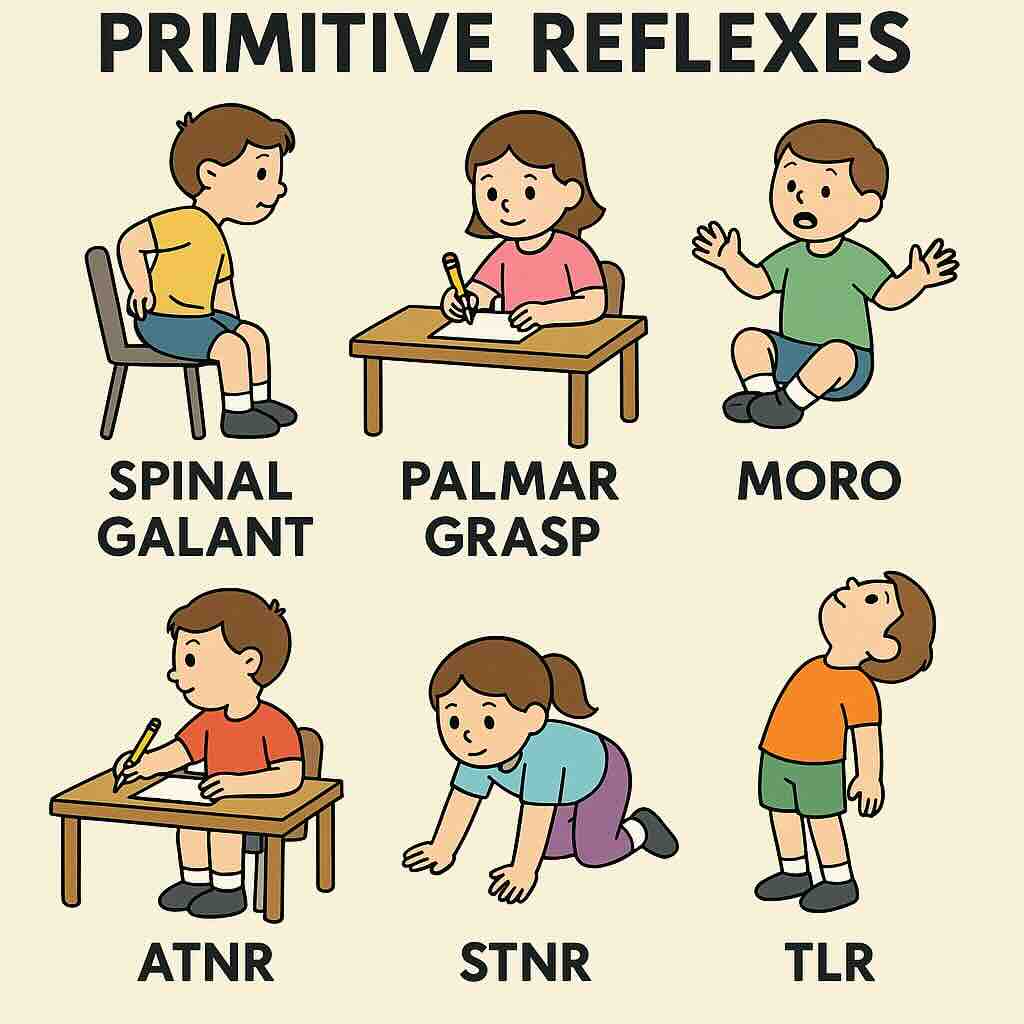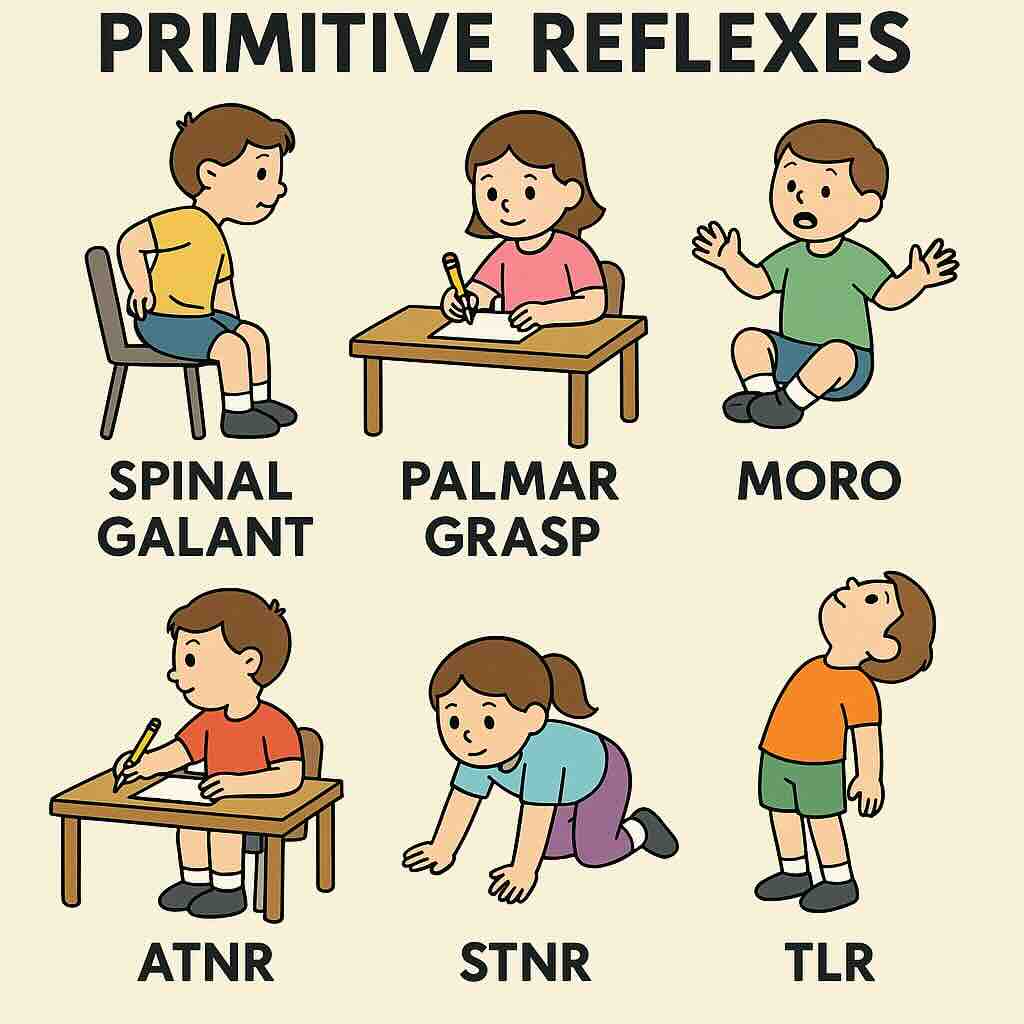Primitive Reflexes
Primitive reflexes are automatic movements babies are born with. They help newborns survive and develop early movement patterns. These reflexes are supposed to fade (integrate) as a child grows.
If primitive reflexes don’t integrate on time, they can interfere with balance, posture, coordination, attention, and handwriting.

Spinal Galant Reflex
- What it is: Stroking the lower back causes the hips to wiggle or shift.
- If retained: The child may squirm in their seat, constantly readjust posture, or be sensitive to touch around the waist.
- In writing: Constant fidgeting makes it hard to sit still and focus.
Palmar Grasp Reflex
- What it is: Touching the palm causes the fingers to close.
- If retained: The child may grip the pencil too tightly or have poor fine motor control.
- In writing: Hand fatigue, messy handwriting, or immature pencil grasp may occur.
Moro Reflex
- What it is: A startle response to sudden movement, noise, or change in position.
- If retained: The child may be jumpy, anxious, or overly reactive.
- In writing: Easily startled, difficulty filtering sensory input, or trouble staying calm and focused.
ATNR (Asymmetrical Tonic Neck Reflex)
- What it is: When the head turns to one side, the arm on that side stretches out, and the opposite arm bends.
- If retained: Difficulty crossing midline, poor handwriting flow, or switching hands while writing.
- In writing: Letters may drift on the page; the child may avoid turning their head while writing.
STNR (Symmetrical Tonic Neck Reflex)
- What it is: Looking up causes arms to straighten and legs to bend; looking down does the opposite.
- If retained: Poor posture while sitting, slumping, or “W†sitting.
- In writing: The child may struggle to sit upright or switch between visual focus and hand movement smoothly.
TLR (Tonic Labyrinthine Reflex)
- What it is: Tilting the head back extends the whole body; tucking the head under causes the body to curl.
- If retained: Poor balance, low muscle tone, or difficulty with spatial awareness.
- In writing: Trouble sitting upright or controlling posture for desk work.

